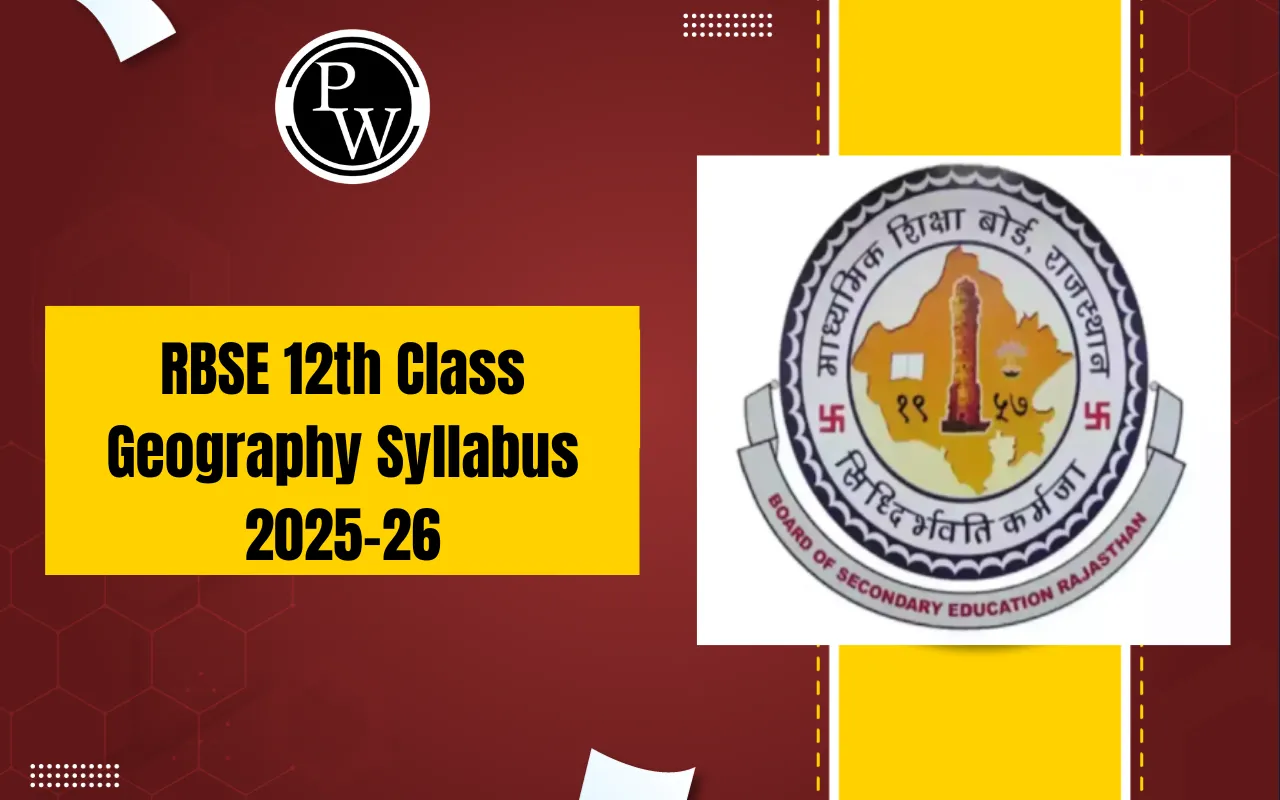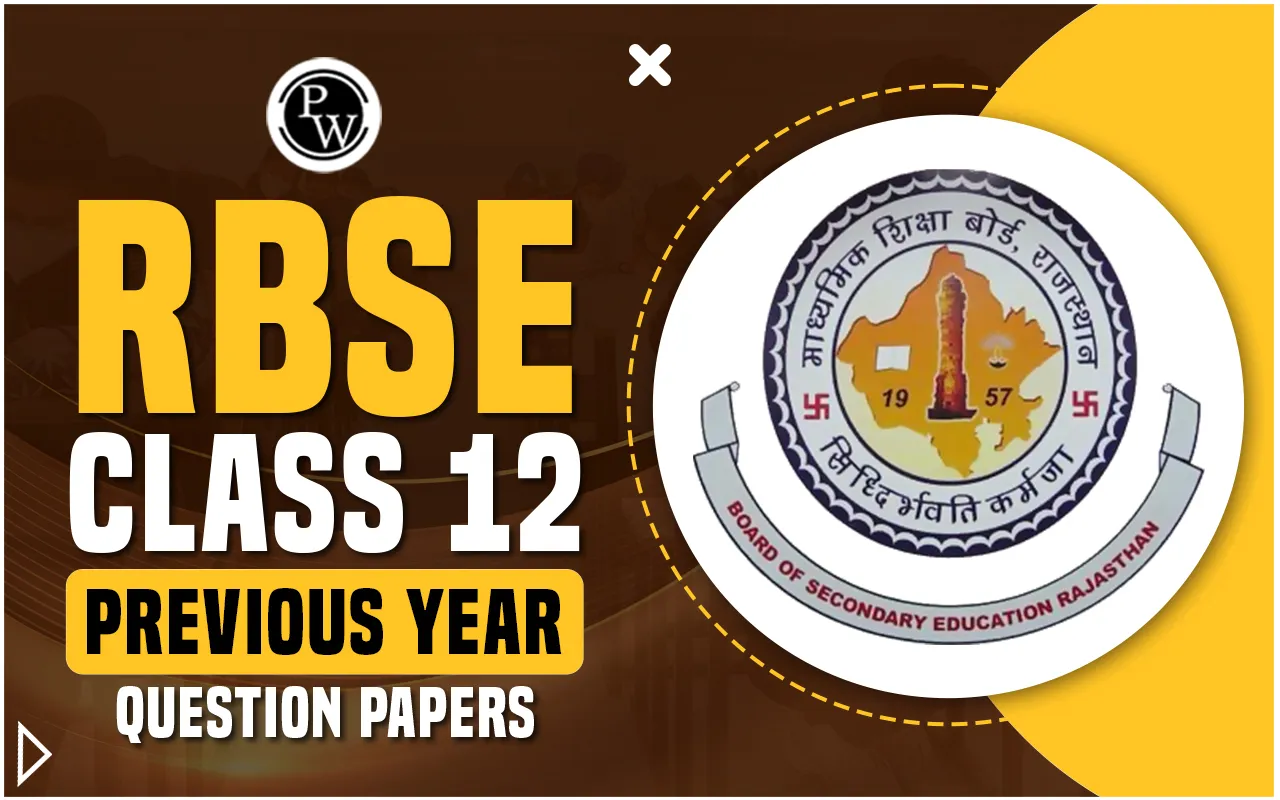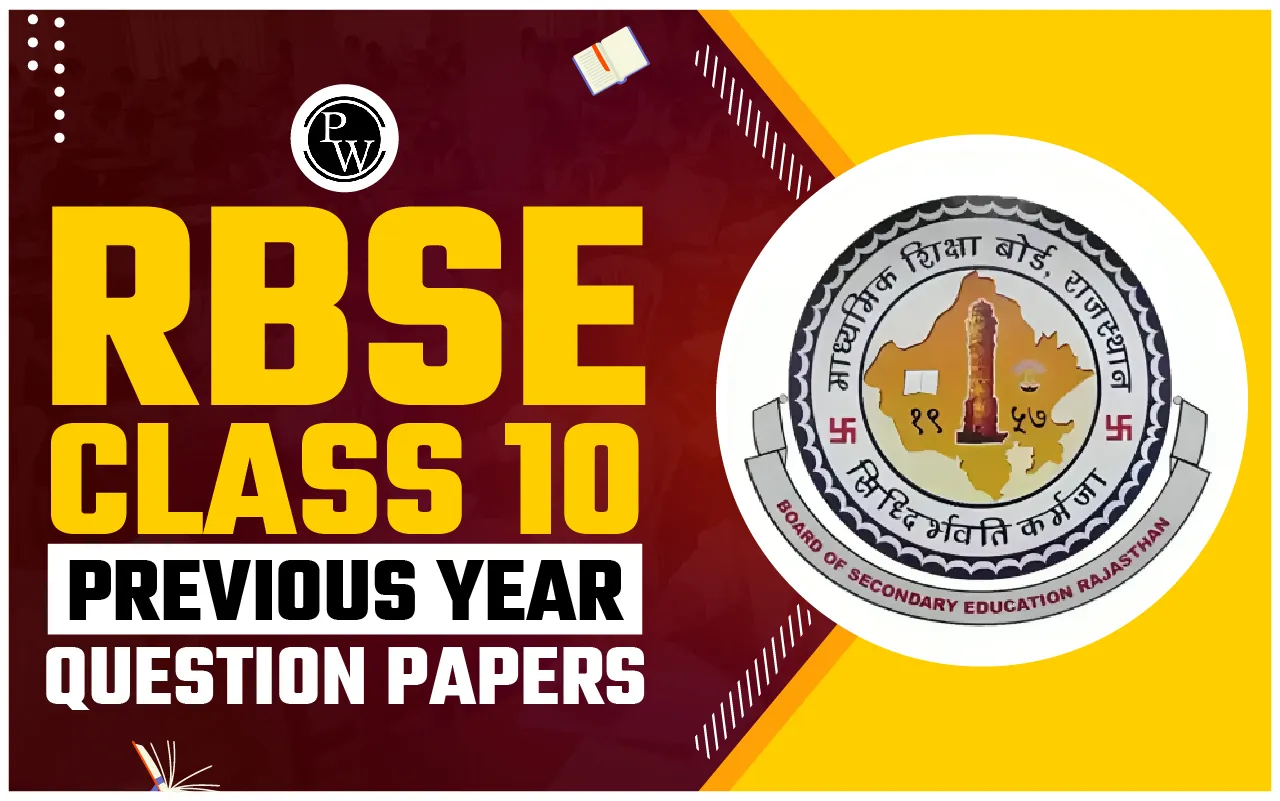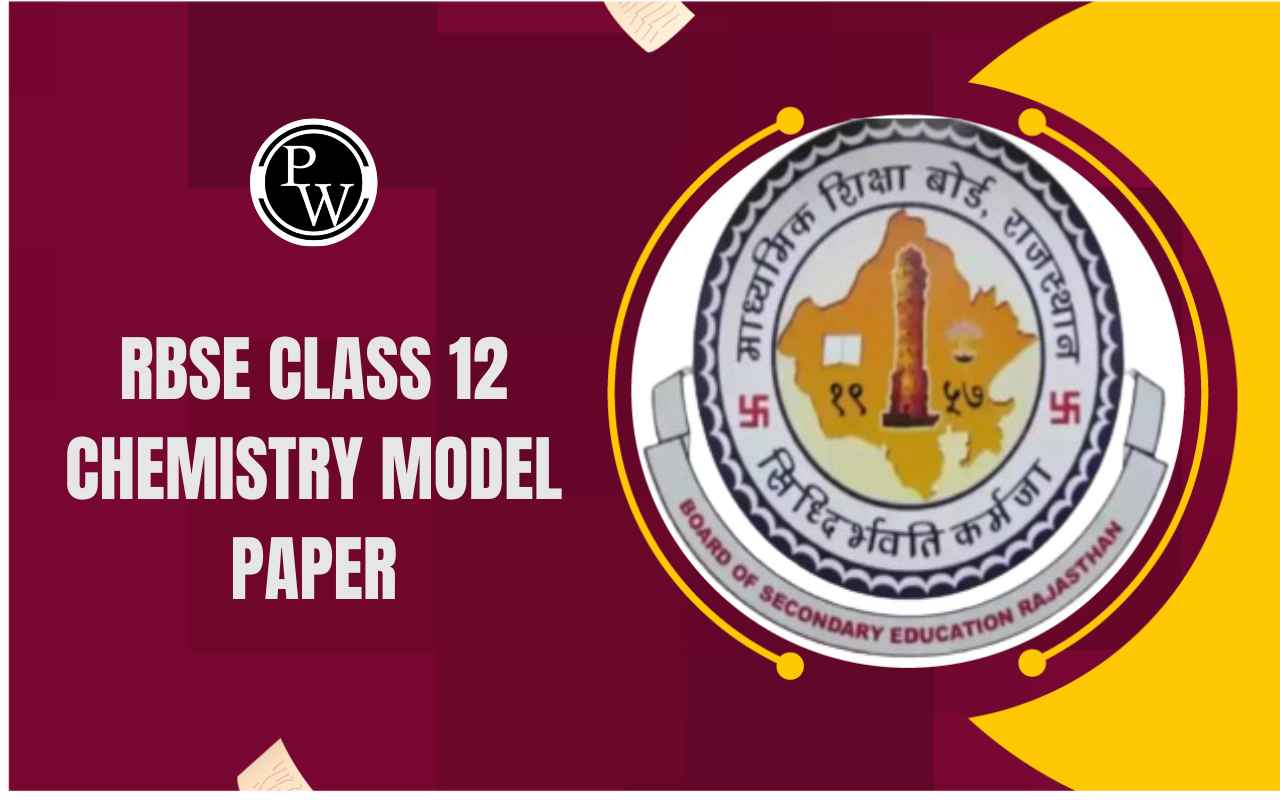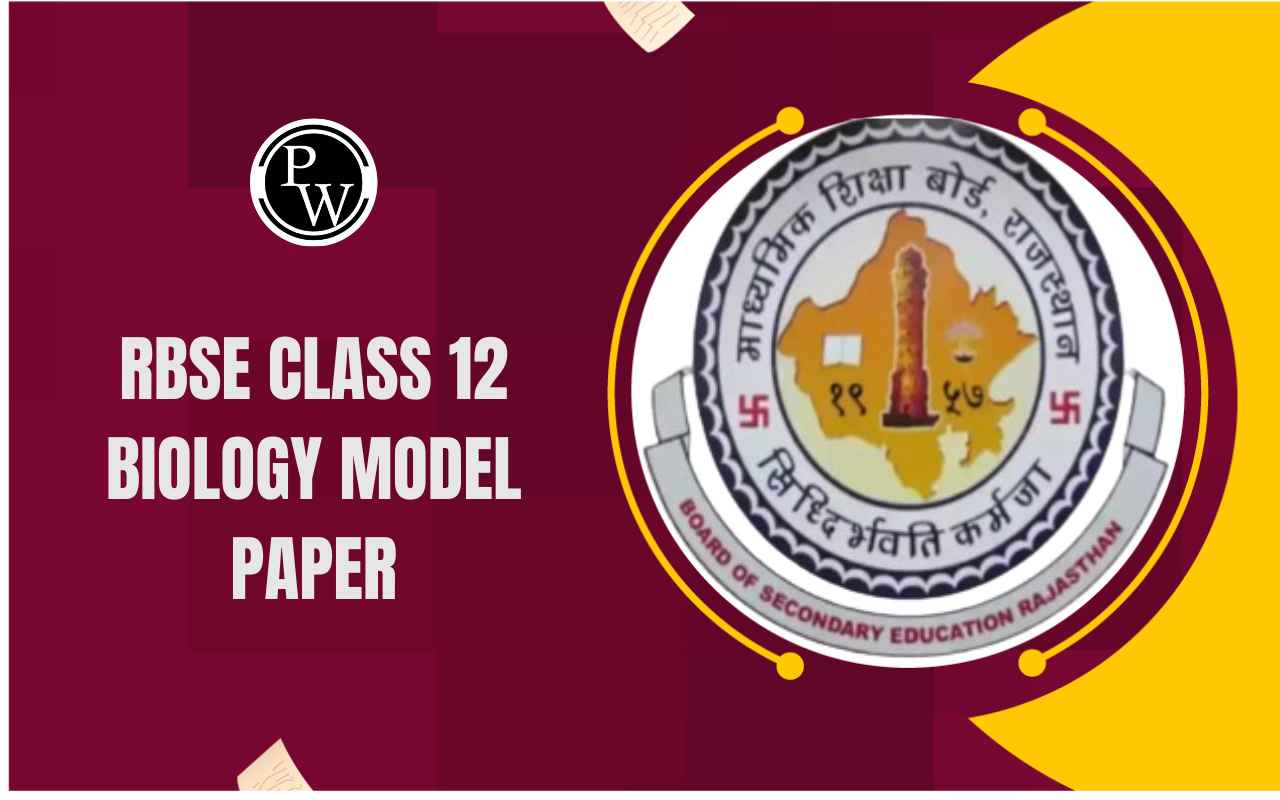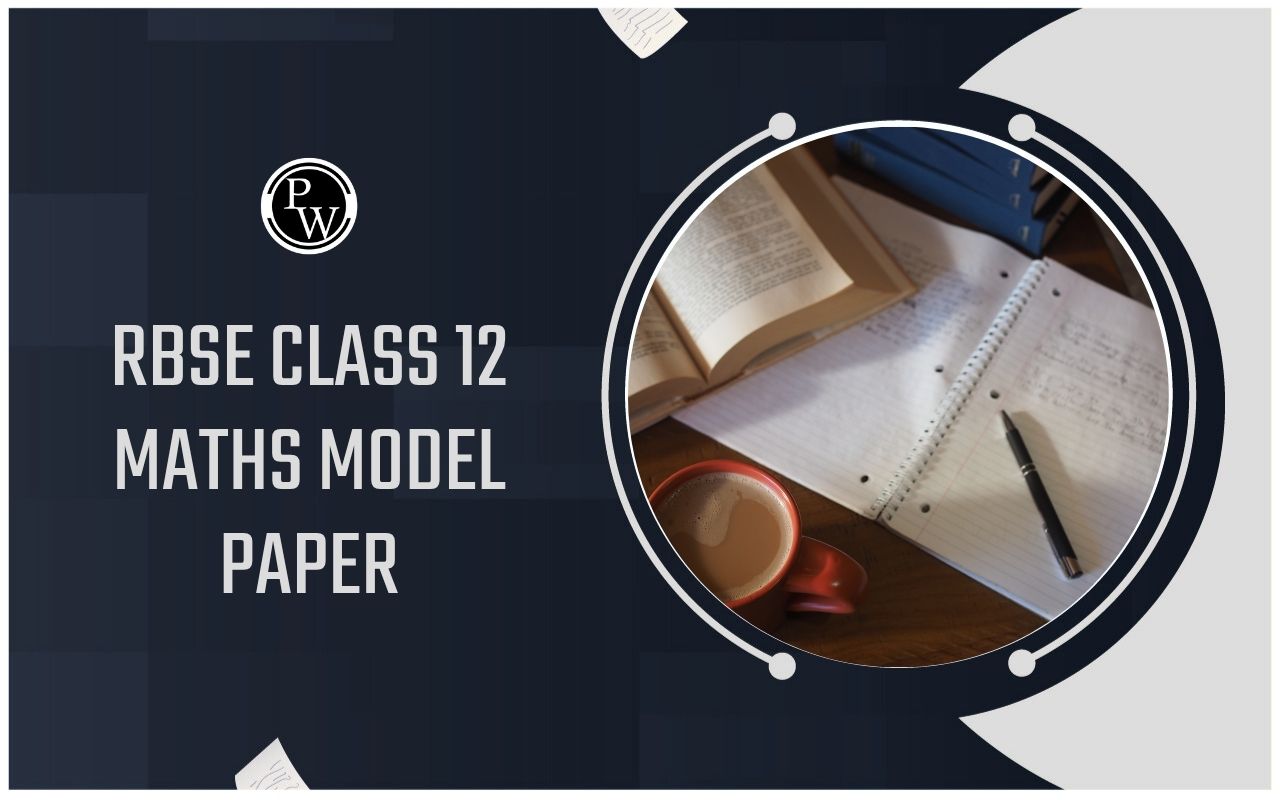
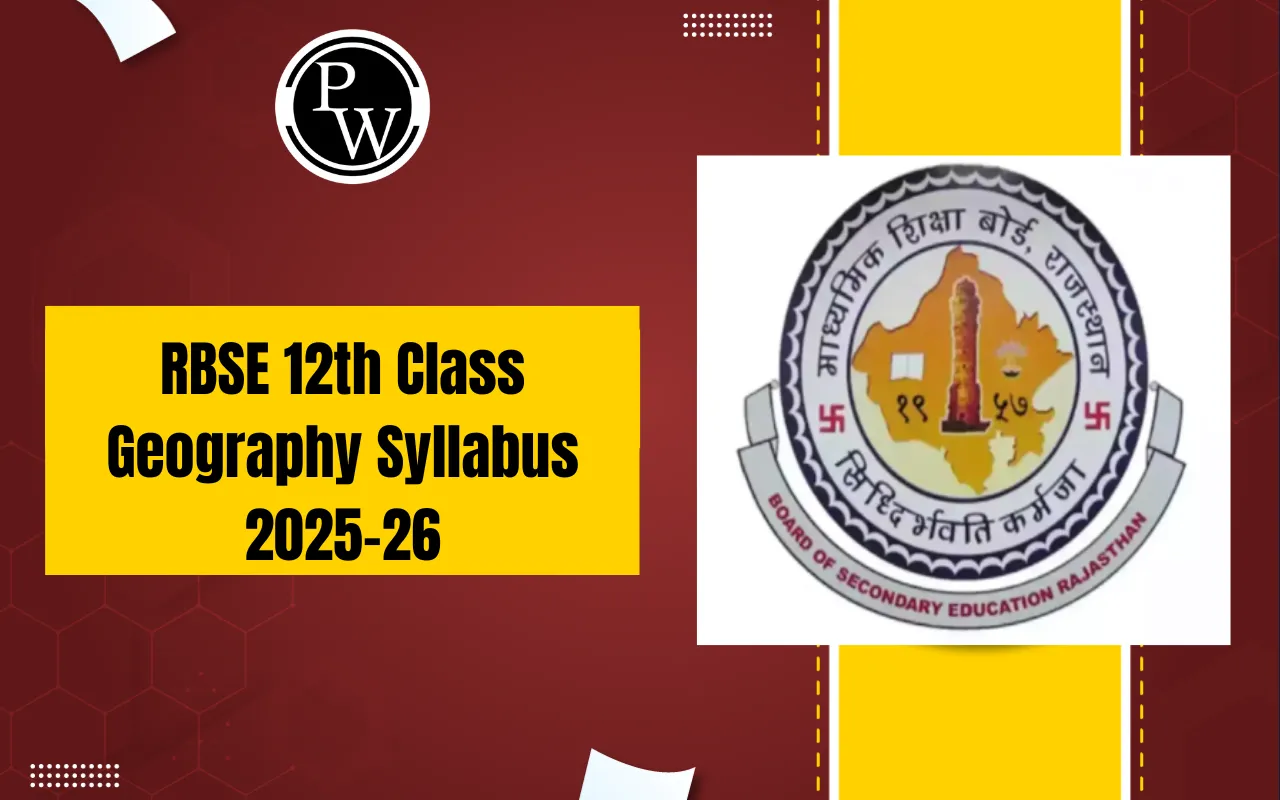
RBSE 12th Class Geography Syllabus 2025-26: Geography is an important subject for students appearing in the RBSE 12th Class examination. It helps students understand the interrelationship between human life and the natural environment.
The Rajasthan Board of Secondary Education (RBSE) sets its Geography syllabus to help students develop analytical skills, geographical knowledge, and an understanding of resource planning and development.
For the academic session 2025-26, RBSE has provided a comprehensive RBSE 12th Syllabus covering topics like population distribution, human activities, resource management, human settlements, trade, and sustainable development. Students must prepare for the board exams by referring to the RBSE Class 12th syllabus 2025-26.
RBSE 12th Class Geography Syllabus 2025-26 Overview
The RBSE Geography syllabus for Class 12 helps students develop an understanding of geographical concepts, spatial distribution of resources, and human interaction with the environment. Below is the RBSE 12th Geography syllabus 2025-26 overview:
|
RBSE 12th Geography Syllabus 2025-26 Overview |
|
|
Particulars |
Details |
|
Conducting Board |
Rajasthan Board of Secondary Education (RBSE) |
|
Class |
12th |
|
Subject |
Geography |
|
Subject Code |
029 |
|
Session |
2025-26 |
|
Official Website |
|
RBSE 12th Class Geography Syllabus 2025-26 Exam Pattern
The Geography paper for RBSE Class 12 consists of two parts: a written exam and a practical exam. The written exam carries 70 marks and the practical exam is 30 marks, making a total of 100 marks. The written exam includes objective, short answer, and long answer type questions from all chapters mentioned in the syllabus. Students must also practise map work, as it is an essential part of the paper.
Understanding the RBSE 12th exam pattern will help you allocate proper time to different sections, practise previous years’ papers, and improve your speed and accuracy.
RBSE Class 12th English Syllabus
RBSE 12th Class Geography Syllabus 2026 Download PDF
Students should download the RBSE 12th Class Geography Syllabus PDF for 2025-26 to get a detailed understanding of all chapters, topics, and subtopics included in the curriculum. It will help you keep track of what has been covered and which topic or chapter needs extra attention.
Moreover, downloading the official syllabus will ensure that you prepare according to the updated RBSE guidelines and do not miss any important topic that may appear in the exam. You can download the syllabus from here:
RBSE 12th Class Geography Syllabus 2025-26
Study without using the internet
RBSE 12th Class Geography Syllabus 2026 Marking Scheme
The RBSE 12th Geography exam is structured to check your understanding of concepts as well as your ability to apply them to India’s geographical context. The total marks for the theory paper are 70, distributed across 10 units divided into Part A (Fundamentals of Human Geography) and Part B (India: People and Economy).
RBSE 12th Class Geography Syllabus 2026 Marking Scheme helps students understand which units are scoring and must be prioritized. Part A focuses on global human geography fundamentals like population, economic activities, settlements, and trade. Part B covers Indian geography in detail, such as resources, agriculture, industries, transport and national issues.
It is essential that students cover both the parts in order to score well in the board exams. Preparing according to the marking scheme will ensure that you don’t spend too much time on low-weightage topics. Here is a detailed unit-wise marking scheme covering all topics and subtopics as given in the RBSE 12th Geography syllabus for 2025-26.
|
RBSE 12th Class Geography Syllabus 2026 Marking Scheme |
||
|
Part A – Fundamentals of Human Geography |
||
|
Unit |
Subtopics |
Marks |
|
Unit 1 |
Human Geography – Nature and Scope |
03 |
|
Unit 2 |
The World Population: Distribution, Density, and Growth |
05 |
|
Human Development |
||
|
Unit 3 |
Primary activities: Hunting and gathering, Pastoralism: Nomadic herding, Commercial livestock rearing. Agriculture: subsistence agriculture primitive subsistence agriculture. intensive subsistence agriculture. plantation agriculture. Extensive Commercial grain cultivation. Mixed farming. Dairy farming. Mediterranean agriculture. Market gardening and Horticulture. co-operative farming. collective farming. Mining: factors affecting mining activity. methods of mining. |
18 |
|
Secondary activities: Manufacturing, Characteristics of modern large scale manufacturing. Skill specialization, mechanization, organizational structure and stratification. Technological innovation. Uneven geographical distribution, Access to market. Access to raw material Access, access to labour supply, access to Sources of Energy. Accessibility to transport and communication facilities, Government policy. Accessibility to agglomeration Economics/Links between industries, Classification of manufacturing industries -Size based industries, Raw materials based industries, Production/Product based industries. Ownership industries,( Freelance ) Foot loose industries. |
||
|
Tertiary & Quaternary activities: Types of tertiary activities, trade and commerce, retail trading, wholesale trading, transport, communication, telecommunication, services, people engaged in tertiary activities, some selected examples –tourism, tourism region, Tourist Attractions, Medical services for overseas patients in India, quaternary activities. Quinary activities, outsourcing, the digital divide. |
||
|
Transport & Communication: Land Transport- Roads, Borderroads, railways- trans–continental railways- Trans–Siberian, Trans– Canadian, the union and pacific railway, the Australian trans–continental Railway, the orient express. water transport- sea routes- the northern Atlantic sea route, the mediterranean–indian ocean sea route, the cape of good hope sea route, the southern Atlantic sea route, the north pacific sea route, the south pacific sea route, coastal shipping. Shipping canals- the Suez Canal, the Panama Canal. Inland waterways- the Rhine waterways, the Volga waterway, the Danube waterway, the great lakes – st. lawrence seaway, the mississippi waterways. Air transport- inter-continental air routes. Pipelines, Communications- satellite communication, cyber space – internet. |
||
|
International Trade: History of international trade, why international trade existed, basis of international trade, balance of trade, free trade situation, dumping, world trade organization, matters related to international trade, port, type of ports- classified according to the types of traffic which they handle, depending on location, on the basis of specialized functions. |
||
|
Map work based on the units given above in the given Outline map of the world |
02 |
|
|
Part B – India: People and Economy |
||
|
Unit 1 |
Population: Distribution of Density, Growth and Composition Distribution of density of population, Growth of Population,regional variations in population growth, population composition - rural-urban composition, linguistic composition and linguistic classification, religious composition, composition of working population. Occupatiolnal Categories. |
03 |
|
Unit 2 |
Human Settlements: Rural settlements, The basic differences between rural and urban settlements, types of rural settlements: • Clustered, agglomerated or nucleated,•Semi-clustered or fragmented, Hamleted, and Dispersed or isolated., urban settlements: Ancient Towns, Medieval Towns and Modern Town. Urbanisation in India Functional Classification of Towns, Smart cities Mission. |
02 |
|
Unit 3 |
Land Resources and Agriculture: Land Use Categories, land use change in India, Common Property Resources, Agricultural land use in India, Cropping Seasons in India, Types of Farming, Foodgrains: Rice, Wheat, Jowar Maize, Bajra, Pulses, Gram, Tur (Arhar) Fibrous crops: Cotton and Jute , Other crops: Sugarcane, Tea and Coffee, oilseeds, Agricultural development in India, increase in agricultural production and development of technology, problems of Indian Agriculture. |
14 |
|
Water Resources: Water resources of India water demand and utilization, water quality depletion, water conservation and management, water pollution prevention, water recycling and reuse, watershed management, rainwater harvesting, watershed development: a reality Study, Indian National Water Policy, 2002, Jal Kranti Abhiyan (2015 -16). |
||
|
Mineral and Energy Resources: Types of Mineral Resources, Distribution of Minerals in India: Ferrous Mineral: Iron-Ore, Copper, Bauxite, Manganese Non-ferrous Minerals. Non-metallic Minerals Energy Resources: Conventional Sources of Energy, Unconventional Energy Sources, Conservation of Mineral Resources. |
||
|
Planning and Sustainable Development in Indian Context: Approches to Planning target area planning, hilly area development program, drought prone area development program, case study - coordinated tribal development program in Bharmour region, case study - Indira Gandhi Canal Command Area, sustainable nutritional development, promoting sustainable nutritional development remedy. |
||
|
Unit 4 |
Transport and Communication: Major means of transport- Land Transport: Road Transport: Rail Transport, Water Transport, Inland Waterways, Ocean Routes, Air Transport, Oil & Gas Pipeline, Communication Network-Personal Communication System and Mass Communication System. |
|
|
International Trade: Changing Pattern of the Composion of Indias Exports, Changing Pattern of the Composion of Indias Import, Direction of trade, Sea ports as gateways of International trade. |
||
|
Unit 5 |
Geographical Perspective on Selected Issues and Problems: Environmental pollution: water pollution, air pollution, land pollution, noise pollution. Urban Waste Disposal Case Study- A Role Model of Restore the ecology and safeguard. Human health in Daurala |
03 |
|
Map work based on the units given above in the given Outline map of India |
02 |
|
|
Practical Paper |
- Map Work - Data Processing and Presentation - Record Work and Viva |
30 |
|
Total |
100 |
|
RBSE 12th Class Geography Syllabus 2026 Practical Assessment
RBSE 12th Class Geography Syllabus 2026 Practical Assessment will test your ability to use maps, interpret data, and present information graphically. It carries 30 marks and is an integral part of the Geography syllabus.
Students must perform activities such as preparing thematic maps, analysing statistical data, and interpreting topographical maps. Here is the clear division of marks in the Practical Assessment:
|
RBSE 12th Class Geography Syllabus 2026 Practical Assessment |
|
|
Component |
Marks |
|
Theory Paper |
16 Marks |
|
- 4 Questions (from Chapters 1-4) |
4 Marks each |
|
Practical and Viva |
14 Marks |
|
- Practical Record |
10 Marks |
|
- Viva Voice |
4 Marks |
|
Total |
30 Marks |
RBSE 12th Class Geography Syllabus 2026 Recommended Books
Students must study from the books mentioned and included in the curriculum by the RBSE Board. NCERT textbooks cover the syllabus comprehensively and include relevant exercises. An updated Atlas is crucial for practising map work accurately. Here are the RBSE 12th Class Geography Syllabus 2026 Recommended Books:
-
NCERT Geography Textbooks for Class 12
-
RBSE prescribed Geography textbook
-
Atlas for map work
How to Prepare for the RBSE 12th Class Geography Exam 2025?
Geography is not just theory, its facts, maps, data, and logical connections. Here are some preparation tips you must follow in order to prepare well for the board exams:
-
Start with Unit-wise Topic Groups
Begin with Fundamentals of Human Geography (Part A) as these units are conceptual and scoring. For example, understand the nature and scope of hman geography, and learn population trends with real data examples.
For India: People and Economy (Part B), connect each topic with current statistics. For example, when you are studying resources, check Rajasthan-specific mineral data or irrigation projects, this local connection will help you remember facts better.
-
Use NCERT and RBSE Textbooks as Your Base
Don’t rely only on notes, study line-by-line from the prescribed books. For topics like Primary, Secondary, Tertiary Activities, note examples for each type in India’s context.
-
Practise Map Work Every Week
Geography exam maps cover population distribution, crops, minerals, rivers, industrial regions and transport routes. Mark and revise these on blank outline maps weekly. You can use colour pencils to differentiate resources or transport lines. Focus on neat labelling as it can help you score good marks.
-
Make Tables for Easy Revision
To revise easily without any hassle, create summarised tables for topics like Population Growth or Types of Settlements. For example, list all kinds of settlements with one unique feature each.
-
Focus Extra on High Weightage Units
Units like Transport, Communication & International Trade, and Resources & Development carry 18 and 14 marks respectively. Learn major trade routes, ports, and commodities as these often come in short notes or map questions.
-
Solve RBSE Previous Papers and Sample Questions
Practice 5–7 years of RBSE Class 12 Previous Year Question Papers as it will help you understand how case-study questions are framed, especially for Selected Issues & Problems like pollution or waste disposal.
-
Focus on Practical Assessment
Complete your record file on time: data tables, maps, graphs. Practice drawing neat diagrams and maps from memory. You must also prepare for viva. Learn important definitions, key statistics, and processes. Teachers may ask simple conceptual questions from your record work.
| Other Important Links: | |
| RBSE 12th Toppers List 2025 | RBSE 10th Toppers List 2025 |
| RBSE 12th Result 2025 | RBSE Board 10th Result 2025 |
RBSE 12th Class Geography Syllabus 2025-26 FAQs
How to download RBSE syllabus?
You can download the syllabus 2025-26 from the official website of RBSE Board i.e., rajeduboard.rajasthan.gov.in/ and even from here, under the heading ‘RBSE 12th Class Geography Syllabus 2026 Download PDF’.
What is the passing marks for RBSE 12th geography exam?
For the RBSE 12th Geography exam, you must score at least 33 percent marks in both the theory paper and the practical examination. In the theory paper, the passing marks are around 23. In the practical examination, you must secure at least 10 marks. It is necessary to pass both sections individually to be declared pass in the subject.
What is the practical marks distribution for Class 12 RBSE geography exam?
RBSE 12th Class Geography Syllabus 2026 Practical Assessment carries 30 marks in total. It includes a practical and Viva section.
What is the passing marks out of 80 in RBSE Class 12?
Students need to score 26 marks out of 80 in order to pass in the RBSE 12th exams.
How many subjects are in 12th class RBSE?
In RBSE 12th class, the number of subjects depends on the stream you choose. For all the three streams, there are five main subjects, which include compulsory and optional papers according to their chosen stream.

